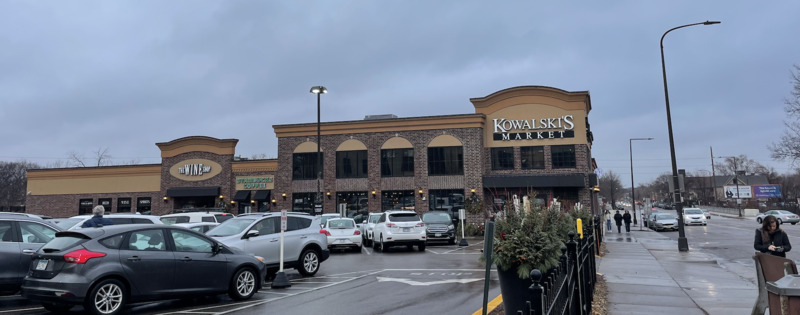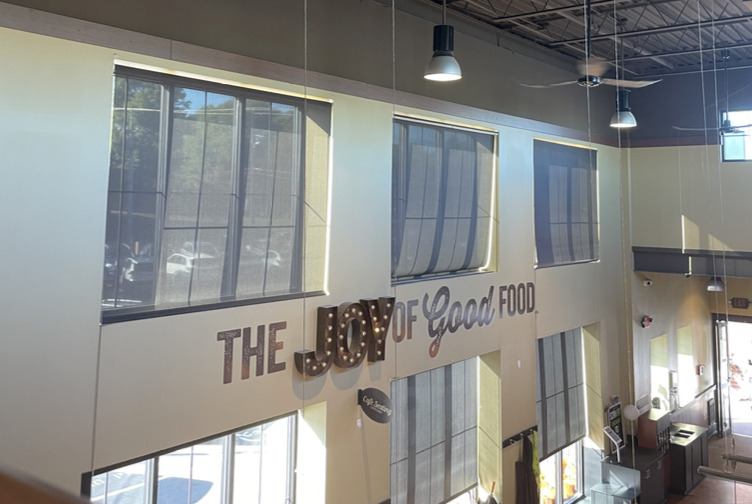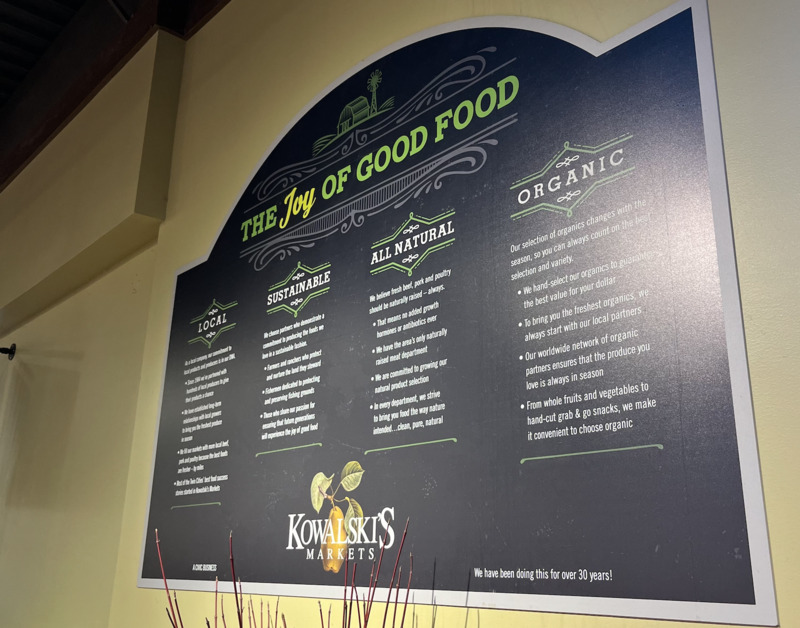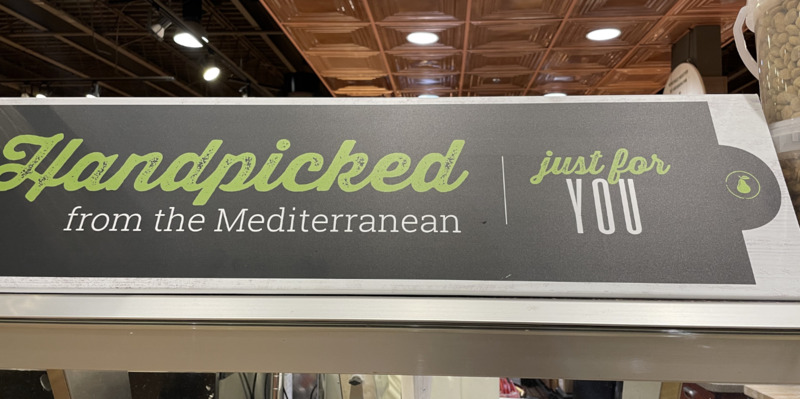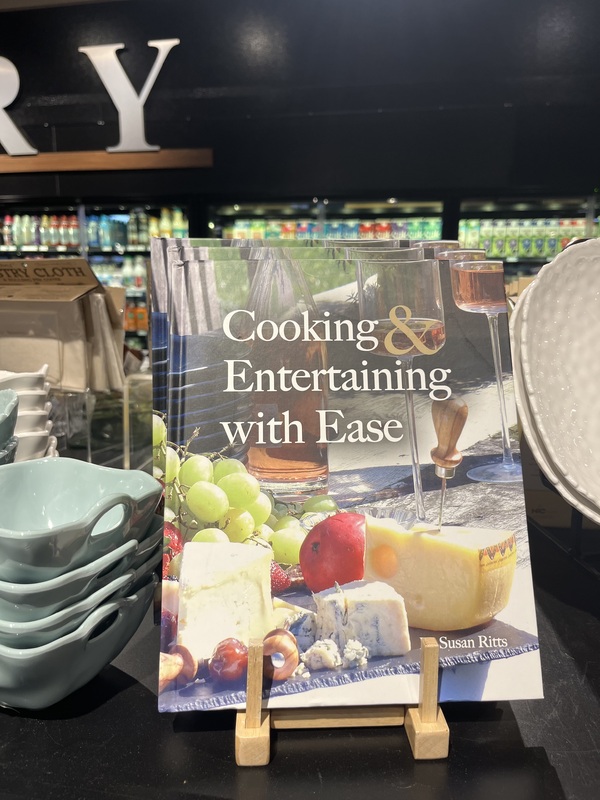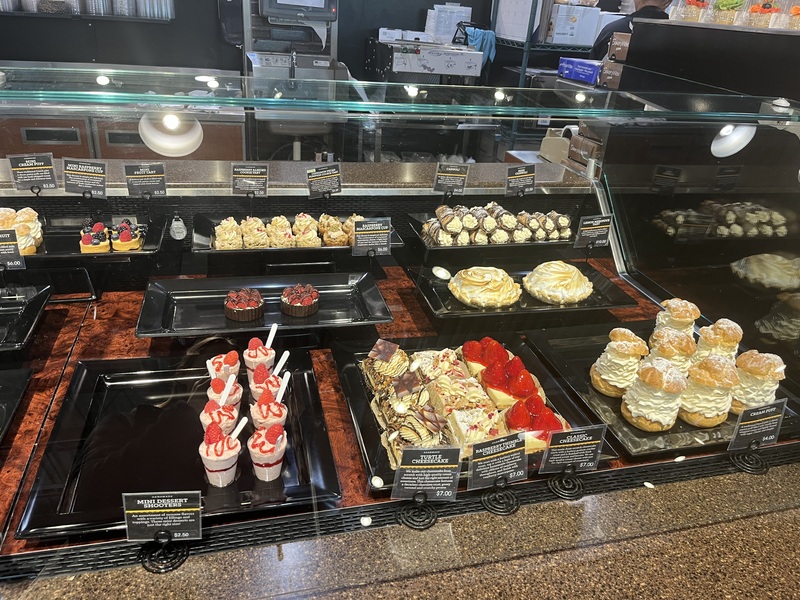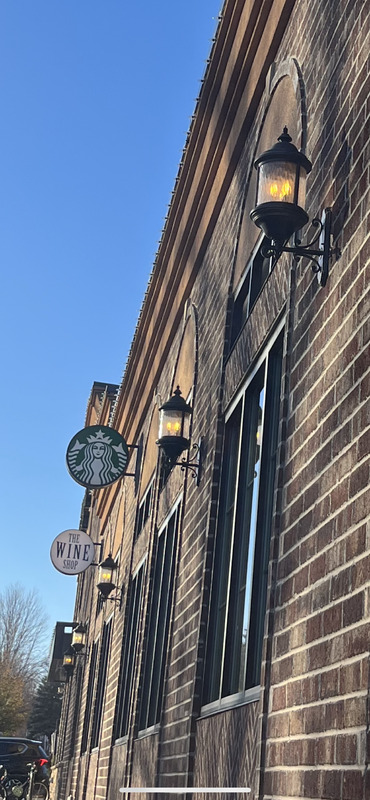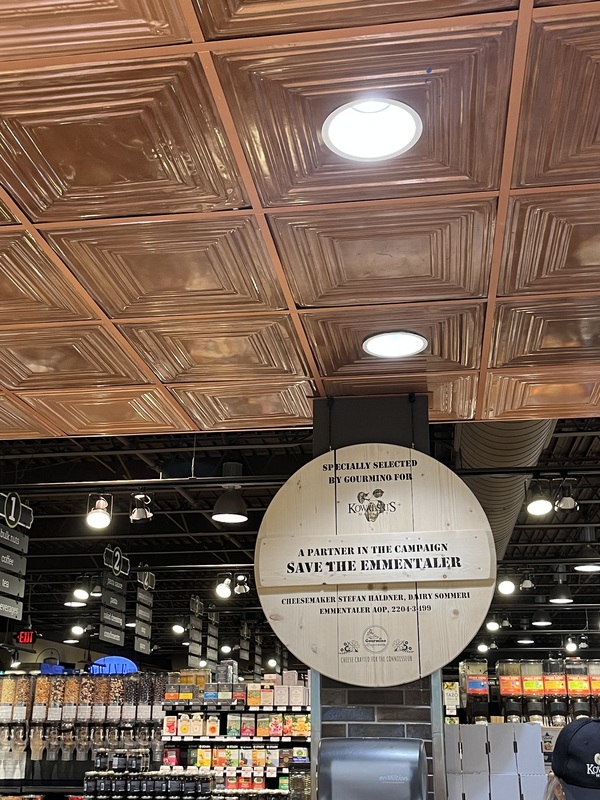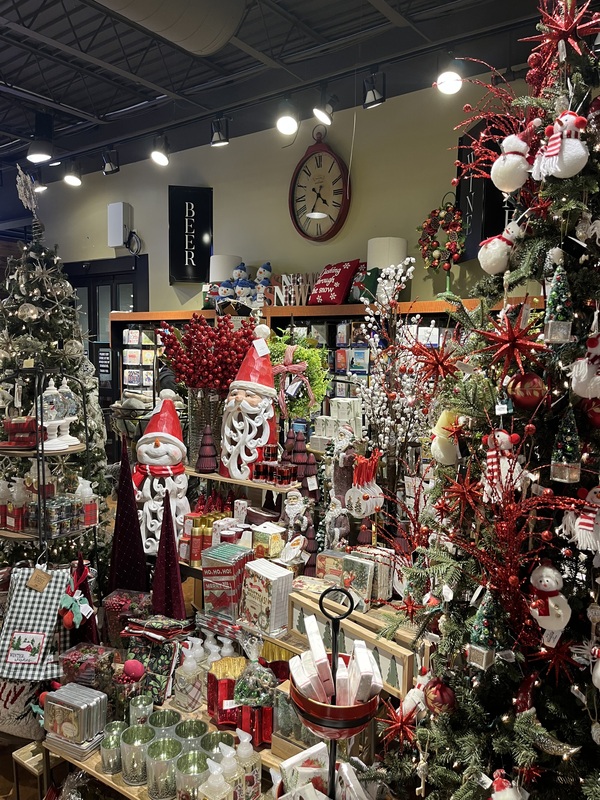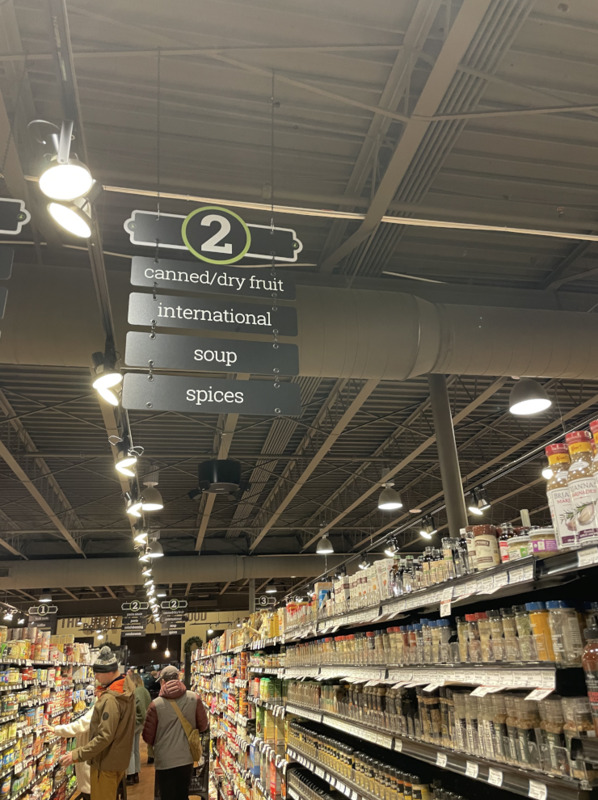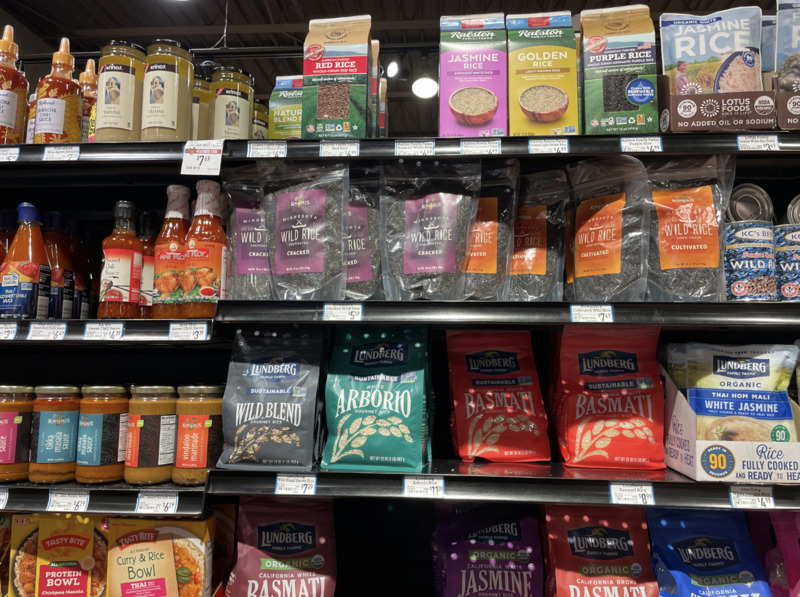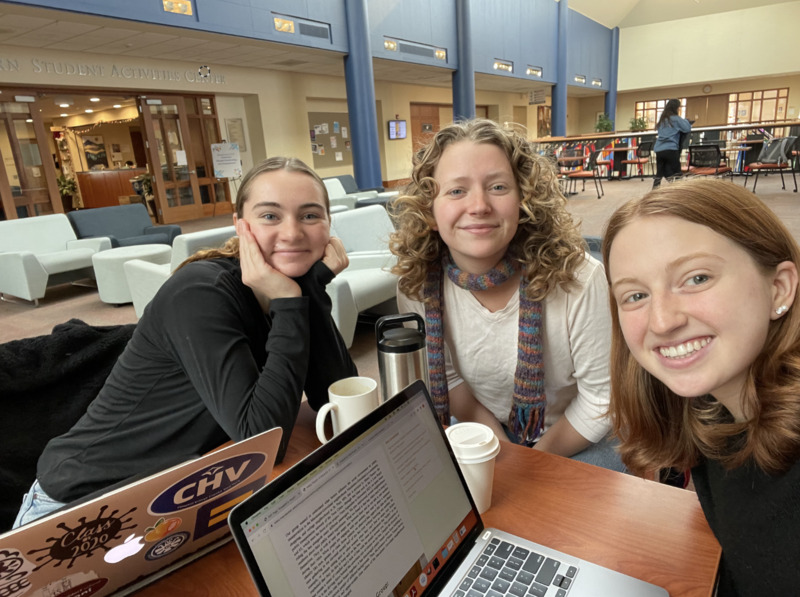Kowalski’s: Wealth and Whiteness in the Macalester Groveland Neighborhood
Kowalski’s is a Minnesota-based chain grocery store that has a number of locations across the Twin Cities metro. The Mac-Groveland location is situated along Grand Avenue, a shopping corridor known for its high-end stores and restaurants, and south of Summit Avenue, known for its extravagant Victorian homes. The Macalester Groveland neighborhood has a long history of housing discrimination, redlining policies, and racial covenants that kept the area white and homogenous and had a major impact on the demographics of residents in the area. The store itself aims to create a unique, high-end shopping experience that appeals to the residents of the Mac-Groveland and Summit Hill neighborhoods. A large part of this appeal is the idea of replicating a European market, which appeals to ideals of whiteness and wealth. To learn more about the space itself and the interactions that take place, we spent hours in the store shopping for food, trying samples, and sitting in the customer cafe. We also interviewed employees and customers to learn more about their experiences with the space.
The Joy of Good Food
Kowalski's slogan "The Joy of Good Food" captures their attitude towards shopping. The slogan, shown in the image, is displayed over the checkout, on the back of employees' uniforms, and on certain Kowalski’s brand items. In our interviews, customers described shopping there as "elevating the shopping experience" and quoted fresh produce, local sourcing, and specialty items to explain why. Additionally, employees described how they were trained to "explain the quality of the food... and where the food is from…It's important." Food is seen as a luxury, not a necessity, which makes their higher prices seem worth it. Customers do acknowledge the high prices, telling us in an interview that "I do think I've just noticed that it is expensive. Like I can buy the same thing...at like a super target for like $3 or $4 less." In addition to the luxurious, elevated environment, for customers, the location and overall convenience are important attracting factors. One customer said “convenience is huge” for choosing to shop there, with another one saying “It's more of a convenience, or a special item place…if we need something we want to walk the dogs to.” The Macalester Groveland neighborhood, and surrounding neighborhoods with similar white, affluent demographics, creates a demand for the “local,” convenient grocery store to stock specialty items illustrating that they can afford for convenience to be expensive.
European Market Aesthetic
Kowalski’s seeks to differentiate its stores from other grocers by modeling it after a “European Village.” They state: “Once again, what was now becoming Kowalski's signature European market theme was executed in the remodeling of these stores,” without much explanation about what this European Village means exactly. Many of the food items at Kowalski’s are specialty, artisanal or gourmet items. The emphasis on “classy” food items ties back to this classed vision of good food and idealization of Europe. The design was intended to create a better store culture and shopping experience for the customer. Kowalski’s states: “we promise to always do our best to make you feel like family.” This European ideal is something that seems to be sought after in afffluent American culture and can be tied in with ideals of class and whiteness. Digging into the European market theme, we teased apart what we thought that ideal “Europe” seemed like to the Kowalski’s store and clientele. This proved a difficult task. What does Europe mean to Americans? One conclusion was that Europe is equated with whiteness. Although whiteness can be an ambiguous definition and shift slightly with different times and social situations, the European ideal is a racialized and classed concept that is in demand in the white, upper class neighborhoods around Kowalski’s. One of our interviewees described herself as a “European shopper.” She said, “I kind of get what I need on that day. Because I like it fresh.” This demonstrates that European idealization is present in Macalester Groveland.
“International” Food
As with many other American grocery stores, Kowalski’s features an “international” food aisle, stocked with rice, tortillas, sauces, and other products seen as the “other” within the store’s European aesthetic. The way that these foods are categorized influences our perceptions of what is included in American culture, and what is seen as outside of, or the other. One example of this is Kowalski’s categorization of wild rice as international cuisine. Wild rice is native to Minnesota and, therefore in no way “international”, but is still seen as separate in some way. This demonstrates the way in which the label of “international” is used as a more discreet way of saying “not white”, as wild rice is known as a staple food for the Dakota and Ojibwe people. In the larger picture, this categorization reinforces the idea that American culture is white culture. Changing constructions of whiteness have been represented throughout the changes in the international food aisle over time, with Italian foods such as olive oil having moved from being considered international to American as they have become normalized in white culture.
